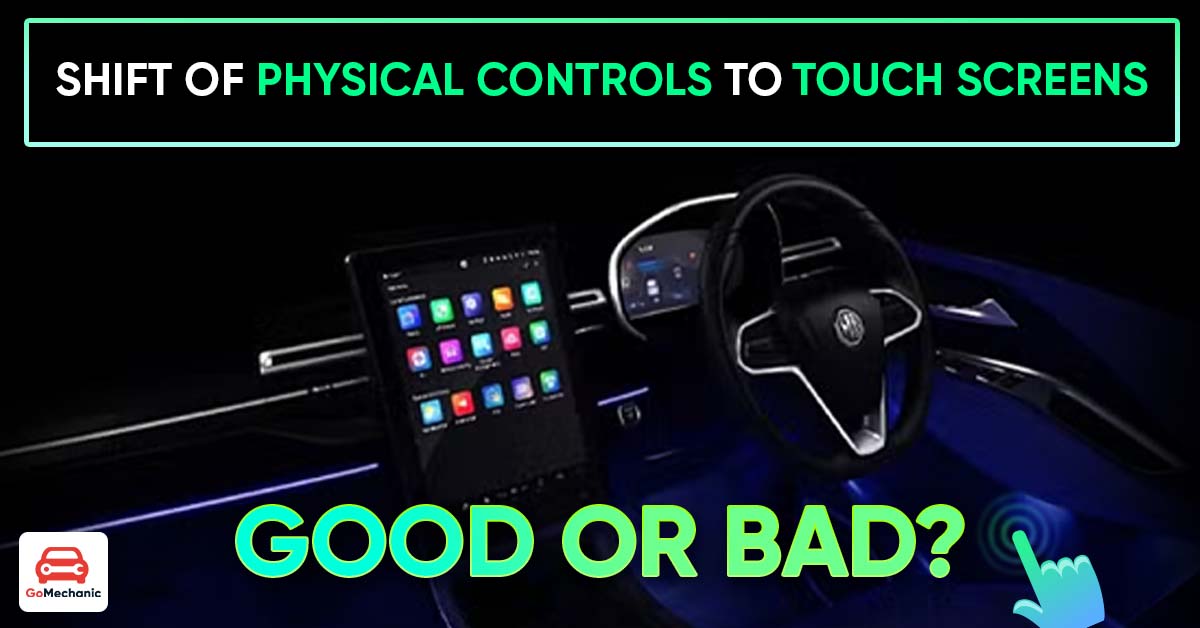The automotive business has witnessed a spectacular change from actual physical to electronic controls more than the previous ten years. As automobiles become extra large-tech and resemble our personal devices like smartphones and laptops, the question emerges – are touchscreens actually far better than conventional knobs and buttons? This discussion is not about mere aesthetics but encompasses user choice, security, and the seamless integration of ever-evolving technological innovation.
The argument for actual physical controls
Bodily controls, like knobs and buttons, give a common, tactile knowledge. Their situation remains fixed, making it possible for the driver to memorize their spots, producing what’s named ‘muscle memory.’ With time, the driver can modify the air-conditioning or alter the radio station without having getting their eyes off the highway.
Actual physical controls offer you regularity, a perception of certainty. They also provide carmakers with a one of a kind possibility to differentiate on their own, imbuing their interiors with a certain look and experience. For illustration, Audi is recognised for its fulfilling ‘clicking’ audio when applying interior buttons, while Bentley’s optional ‘Diamond Knurling’ specification provides a contact of luxurious to its cars’ controls.
On the other hand, the advantage and familiarity of bodily controls appear with a prospective draw back – litter. With an rising variety of adjustable settings and features, dashboards chance getting to be overpopulated with knobs and buttons, as seen in older Porsche Macan and Panamera designs.
The circumstance for touchscreen controls
On the other close of the spectrum, touchscreen controls give a smooth, present day seem reminiscent of our favorite digital products. By integrating several controls in just one particular central display screen, designers can produce thoroughly clean, uncluttered interiors. The Volkswagen Golfing Mk8 stands as an fantastic example of how contact controls can streamline inside design and style.
In addition to aesthetic benefits, touchscreens open up alternatives for innovative features. The ‘smart’ climate control function in new VW designs, supplying presets like ‘warm feet’ and ‘clear windows’, would not be attainable with common knobs and buttons.
Even so, the principal obstacle with touchscreen interfaces is the deficiency of a physical reference position, which can divert the driver’s awareness from the road. This issue is often magnified by poor person interface structure or slow process reaction periods.
Tesla has tackled this dilemma proficiently, pairing a quickly CPU with a consumer-pleasant interface that has critical controls in a preset position for simple obtain. This set up displays how touchscreens, when applied correctly, can provide an exceptional person knowledge.

The center ground: Combining bodily and contact controls
Some automakers have opted for a hybrid method, blending physical and touchscreen controls. Volkswagen’s facelifted designs, for instance, feature a ‘touch slider’ idea for air-conditioning controls. Likewise, Volvo integrates local climate controls inside a touchscreen, retaining a knob for volume and tunes handle. Mercedes-Benz’s newest versions also undertake this solution, incorporating essential controls inside of a significant touchscreen.
The future of auto controls: Voice Assistance
As voice assistant technological know-how advances, the debate about actual physical as opposed to touchscreen controls may perhaps become redundant. In-crafted Google Assistant in Polestar models and Siri or Google Assistant performance in Apple CarPlay and Android Car are indicative of this trend. Voice assistants can present a risk-free and intuitive way to run car or truck controls, maybe pointing toward the long term of auto user interfaces.
Our Choose
As the debate above physical as opposed to touchscreen controls proceeds, one particular factor is very clear – there’s no ‘one-size-suits-all’ response. Companies require to take into account their target audience’s preferences, security, performance, and general driving practical experience when creating their cars’ interiors.
Though some drivers could favor the tactile feed-back of a knob or button, other folks may well value the modern day aesthetic and multi-features of a touchscreen. And as voice assistants develop into much more advanced, the landscape of automobile controls will continue to evolve, shaping the way we interact with our automobiles.
Ultimately, the target need to be to supply an intuitive, user-pleasant encounter that boosts driving protection and satisfaction, irrespective of whether or not it is as a result of a button, a touchscreen, or a voice command. The journey from knobs to screens in vehicles is extra than just a change in technology it’s about the evolution of person experience in the automotive environment.
